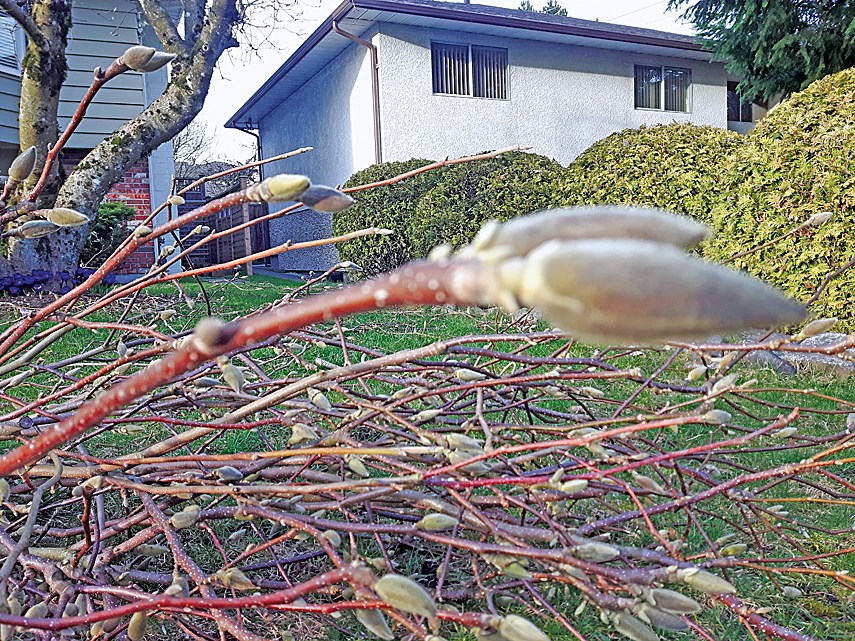It’s a nice spring day and you feel like getting out in the yard and doing something. Let’s think about some things you can do, other than cutting the “about to blossom” buds off your plants.
This is a very dangerous time of year for early flowering shrubs and trees.
People have some time, it’s warm, they want to be doing something worthwhile, so out they go with their cutting tools in hand.
Then the horror movie begins.
Let’s set the scene: Man takes long stepladder and hedge shears to Magnolia tree ready to bloom (I saw this happen last week). This is a specimen tree, the only bit of interest in the front yard. Man shears off all flowering wood on tree. Tree looks ugly, flowers waiting to bloom now piled in front yard. Audience in tears!
I see this scenario going on every spring, often the villains wait until the flowers are opening or in full bloom to do their evil deeds. It leaves me utterly bewildered as to why when someone sees the miracle of nature creating flowers they are inspired to destroy it.
One day I asked the man if he was cutting the branches to take in and force indoors, but of course he said “no,” they were slated for the compost.
The victim was a Chaenomeles japonica (quince), an early spring bloomer that the humming birds love.
Another victim was a Viburnum plicatum f. tomentosum ‘Summer Snowflake’ (Japanese snowball), a lovely early summer flowering shrub, with a large presence, growing to about 15 feet tall and 10 feet wide. The victim in this case was part of a landscape where it was being curtailed to a space of about 4 feet in all directions. (Good reason to read the labels.)
“So just what should I be doing?” you ask. The grasses we left over the winter to supply seed and habitat for the birds are ready to come down, (this makes a good mulch if left on the ground) standing stems and heads of Rudebeckia and Liatrus can come down.
If you want to maximize reproduction of the Liatrus, leave stems and old flowers on the ground as the seeds will easily turn into bulblets and in a couple years will be flowering, and most Sedum heads (although some are still looking good) have done their work and can be trimmed off now. Some fruit tree pruning can be done now, it’s a great time to go after buttercups that are invading the beds, as well as various other annual weeds that are getting ready for their first flowering.
Once the weeds are gone, it is a good time to refresh the mulch, being careful not to bury the emerging bulbs.
Another worthwhile thing to do this spring is to walk through your garden and enjoy the blooms as they appear and watch the birds and insects as they go about their lives in your garden.
Heather Schamehorn is a certified residential landscape designer, educator, sustainability advocate and acupressure therapist. Contact via www.perennialpleasures.ca



